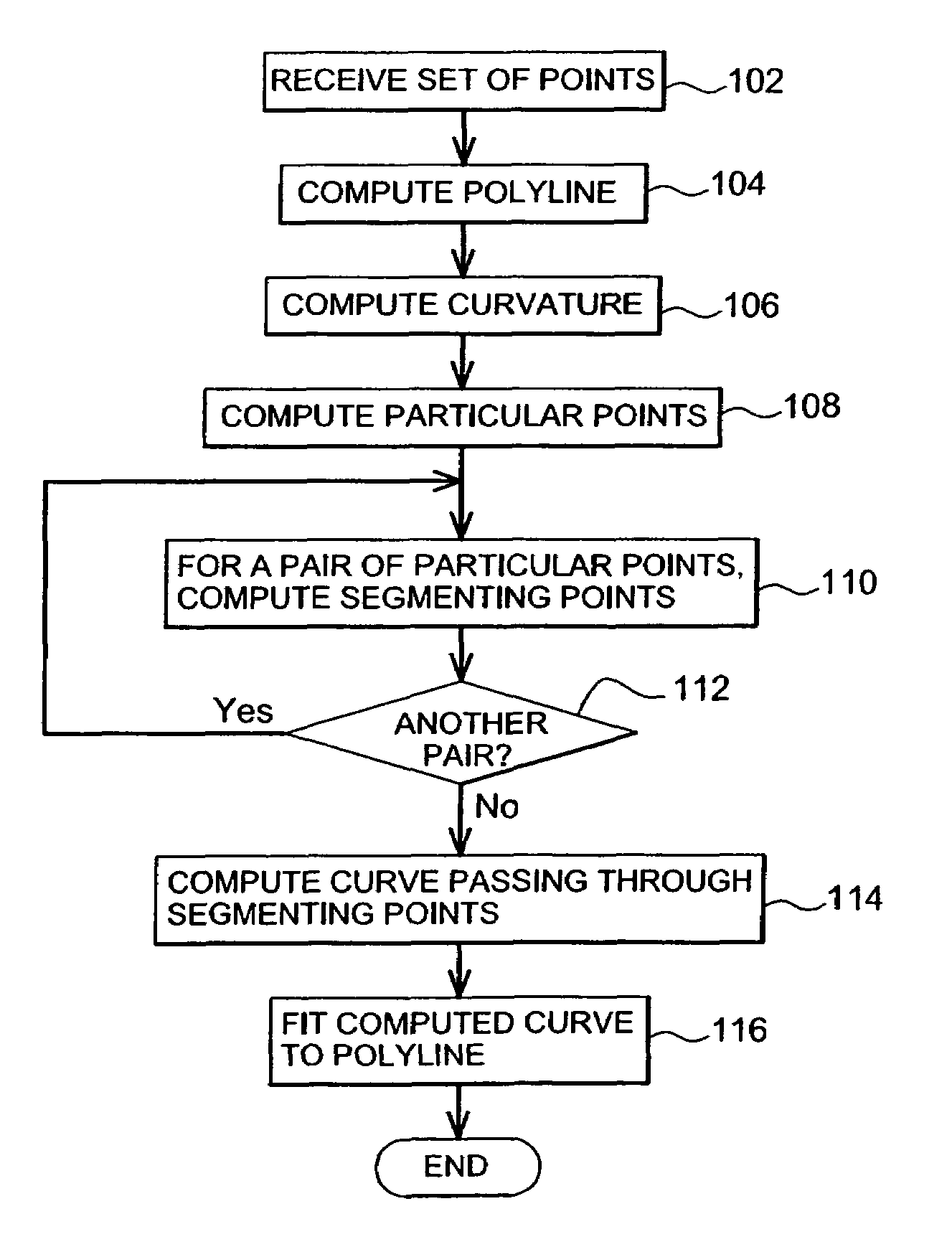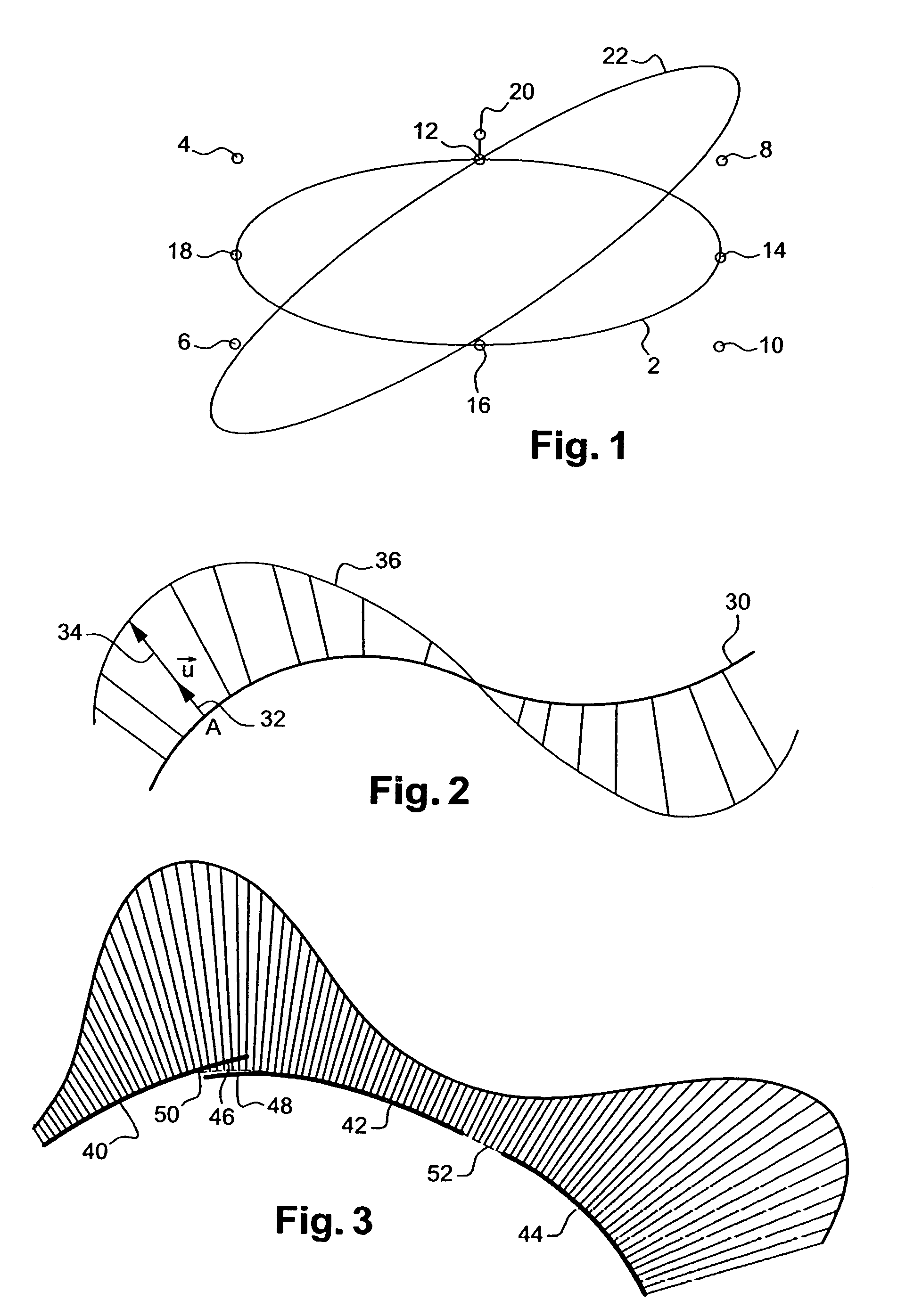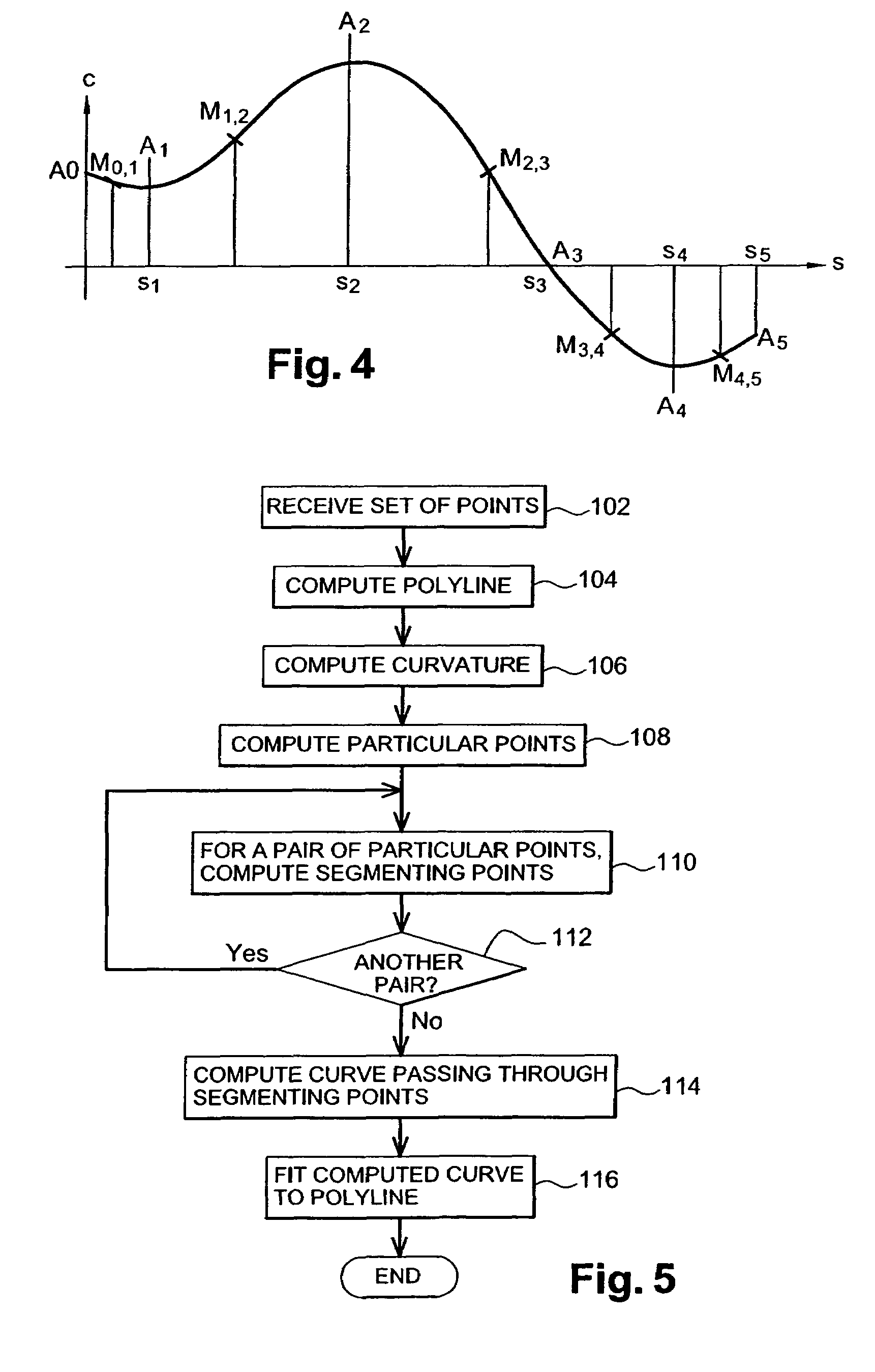Process for drafting a curve in a computer-aided design system
a computer-aided design and curve technology, applied in the field of computer-aided design programs and systems, can solve the problems of difficult to tune local modifications with the desired precision and curve quality, and achieve the effect of minimizing the energy of the curv
- Summary
- Abstract
- Description
- Claims
- Application Information
AI Technical Summary
Benefits of technology
Problems solved by technology
Method used
Image
Examples
Embodiment Construction
[0083]The invention makes it possible to create a curve, starting from a set of points created by the user of a design system. The set of points may be inputted by the user with any type of haptic device, e.g. a mouse, a trackpad, a graphics tablet or the like. Based on the set of points, a curve is created, as explained in reference to FIGS. 3-6. An existing curve may also be modified, as explained in reference to FIGS. 7-8.
[0084]Creation of a curve is now described in reference to FIGS. 3-6. FIG. 3 shows a set of points inputted by the user. In the example of FIG. 3, the user has drafted three strokes 40, 42 and 44 with the haptic device, e.g. three strokes of the pencil of the graphics tablet. These strokes are represented in FIG. 3 and result in a set of points. From the user's perspective, the drafting of the three strokes is representative of the intention to create a curve passing substantially through the various strokes. From the design system's perspective, in step 102 of ...
PUM
 Login to View More
Login to View More Abstract
Description
Claims
Application Information
 Login to View More
Login to View More - R&D
- Intellectual Property
- Life Sciences
- Materials
- Tech Scout
- Unparalleled Data Quality
- Higher Quality Content
- 60% Fewer Hallucinations
Browse by: Latest US Patents, China's latest patents, Technical Efficacy Thesaurus, Application Domain, Technology Topic, Popular Technical Reports.
© 2025 PatSnap. All rights reserved.Legal|Privacy policy|Modern Slavery Act Transparency Statement|Sitemap|About US| Contact US: help@patsnap.com



